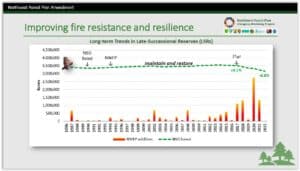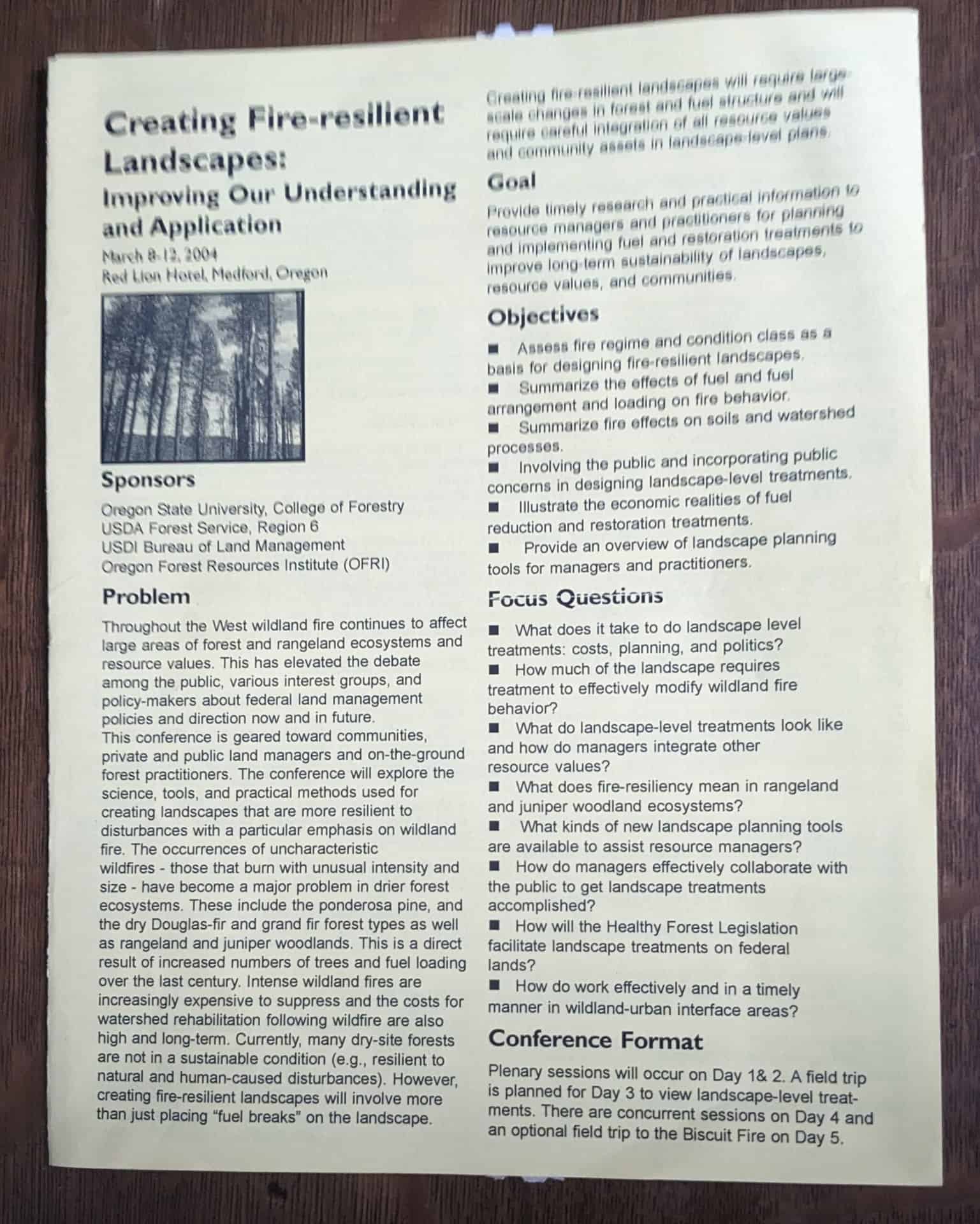An Oregon State Univ. press release….
CORVALLIS, Ore. – Forests on the west slope of Oregon’s Cascade Range experienced fire much more often between 1500 and 1895 than had been previously thought, according to new research by scientists at Oregon State University.
The findings provide important insight, the authors say, into how landscapes might adapt to climate change and future fire regimes.
James Johnston of the OSU College of Forestry led the study, which was published in Ecosphere.
“Wildland fire is a fundamental forest ecosystem process,” he said. “With temperatures rising and more and more area burning, we need to know as much as we can about the long-term variability in fire.”
Johnson and collaborators at Oregon State, the University of Oregon and the U.S. Forest Service gathered tree ring data at 16 sites in the southern part of the Willamette National Forest, in the general vicinity of Oakridge.
Trees form scars after cambial cells are killed by wildfire heat, he said. These scars are partially or completely covered by new tissue as a tree grows, and tree rings tell the story of when the fire exposure occurred.
Using chain saws, the scientists collected samples from 311 dead trees – logs, short snags and stumps. Seventy-three percent of the samples were coastal Douglas-fir, and 13% were ponderosa pine. The remainder were sugar pine, noble fir, red fir, incense cedar, western red cedar, mountain hemlock and western hemlock.
“We cross-dated a total of 147,588 tree rings and identified 672 cambial injuries, 479 of which were fire scars,” Johnston said. “The scars allowed us to reconstruct 130 different fire years that occurred at one or more of the 16 sites before a federal policy of fire suppression went into effect early in the 20th century.”
The main takeaways:
- Fire was historically far more frequent in western Oregon Cascades landscapes than previously believed.
- Indigenous peoples likely used fire to manage large areas for resources and probably altered landscapes and fire regimes in significant ways.
- There are important present-day restoration opportunities for fire-adapted systems in western Oregon.
“Also, our study produced little evidence of the kind of large, wind-driven fires that in 2020 burned 50,000 to 75,000 hectares in the watersheds immediately to the north and south of our study area,” Johnston said. “Only 39% of fire years were recorded at more than one site, only 11% were recorded at more than two sites, and only 3% at more than three sites – in a study area of 37,000 acres, that strongly suggests that most historical fires were relatively small.”
Across all 16 sites, the average fire return interval – the length of time between fires – was as short as six years and as long as 165. In general the differences in those averages were strongly associated with vapor pressure deficit or VPD, basically the drying power of the atmosphere. The higher the VPD, the shorter the time between fires.
However, historical fire in stands seral to Douglas-fir – stands that, if left alone, would end up with Douglas-fir as the dominant tree species – was much less strongly linked with dry air.
“We interpret the extraordinary tempo of fire in those stands, and the climate pattern associated with fire there, to indicate Indigenous fire stewardship,” Johnston said. “We saw some of the most frequent fire return intervals ever documented in the Pacific Northwest, but the enormous volume of biomass that these moist forests accumulate over time is often partly attributed to long intervals between wildfire.”
The authors note that humans have occupied the southern part of what is now the Willamette National Forest for at least 10,000 years. A variety of Indigenous cultures, including the Molalla, Kalapuya, Tenino, Wasco, Klamath, Northern Paiute and Cayuse, probably used the area for trading, hunting and the collection of plants.
“Removals happened very quickly, with most Native people taken to the Grand Ronde, Warm Springs and Klamath reservations,” said co-author David Lewis, a member of the Grand Ronde Tribe and an assistant professor of anthropology and Indigenous studies in OSU’s College of Liberal Arts. “Removal of the tribes took their cultural stewardship practices, their use of annual cultural fires, from the land, radically altering how the forests were managed.”
By 1856, most remaining members of Willamette Valley and western Oregon Cascades tribes had been forcibly removed to reservations. Extensive clearcut logging on the Willamette National Forest started in the late 1940s and continued for four decades.
“Now, Forest Service managers want fine-grained information about forest vegetation and historical disturbance dynamics to manage lands in ways that promote resilience to climate change,” Johnston said.
He added that the Forest Service is working closely with the Southern Willamette Forest Collaborative, a group based in Oakridge, to plan a variety of restoration treatments.
Joining Johnston and Lewis on the paper were the College of Forestry’s Micah Schmidt, now working with the Umatilla Tribe in northeastern Oregon, and Andrew Merschel. Co-authors also included William Downing of the U.S. Forest Service and the University of Oregon’s Michael Coughlan.
The Oregon Department of Forestry funded the study

